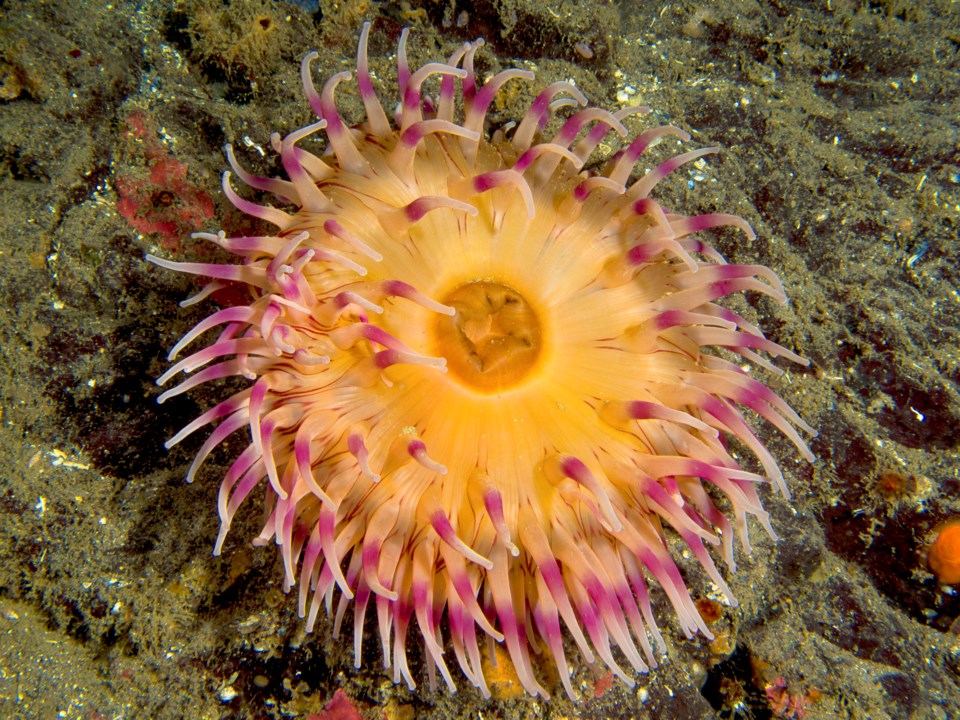The anemone - a name the Greeks used for windflowers - pictured here is the Christmas Anemone or Painted Anemone. There is some dispute over its scientific name. Some scientists call it Urticina crassicornis while others call it Urticina grebelnyi. Anemones, like the corals, are anthozoans or flower-animals (anthos, Greek for flower). Both anemones and corals are placed in the Phylum Cnidaria (knide, Greek for nettle), along with the jellyfish, because, like nettles, they can “sting” you if touched.
Painted Anemones can reach 20 cm in diameter and up to 30 cm in length and may be 80 years old. They are commonly attached to rocks in the lower tidal and subtidal zones in the North Pacific. Anemones have a muscular “foot”, called a pedal disk, which they use to attach to rocks. Like snails and slugs, they can use the foot muscles, along with sticky mucous, to very slowly move along the rocks from one place to another. Anemones, in turn, are eaten by some starfish and snails.
The anemone’s “petals” are actually tentacles that may number as many as 100 arranged in 3-5 circular rings around the mouth. If you quickly touch the tentacles of an anemone, you will sense that they are sticky. This stickiness is caused by thousands of nematocysts that are ejected and stick to your finger.
Nematocysts, which are ejected when prey is encountered or when an enemy attacks, show great variety: some can be harpoon-like, tipped with highly poisonous toxins that kill prey or even us – Beware the Box Jellyfish! The Christmas Anemone uses its nematocysts to immobilize and kill crabs, sea urchins, mussels, snails, chitons, barnacles, and even small fish.
An anemone can contract all its body muscles flattening itself against a rock, perhaps to avoid a predator or to remain in place in rough waves. When it is ready to extend itself again, it “inflates itself” very slowly by beating the cilia that line the siphonoglyphs and drawing water into the body.



